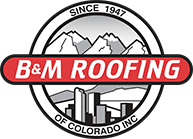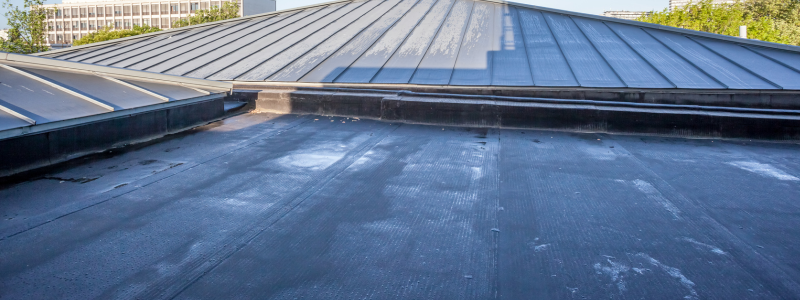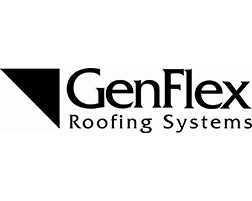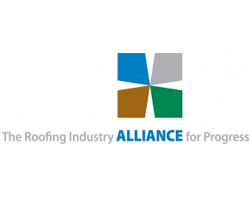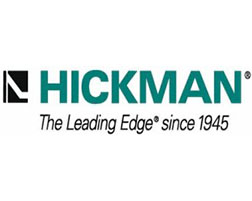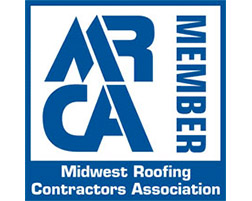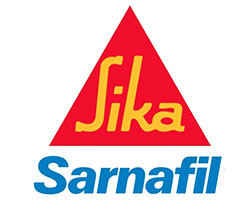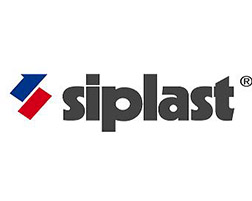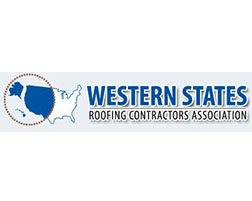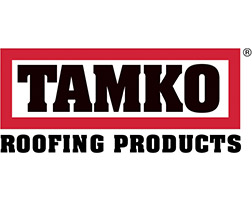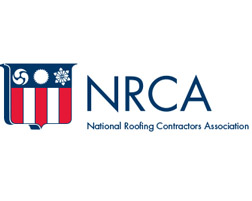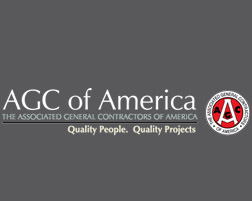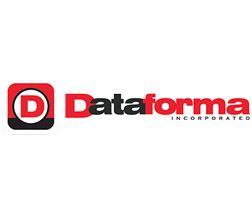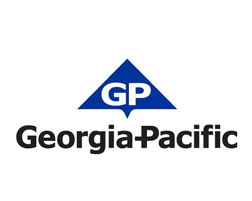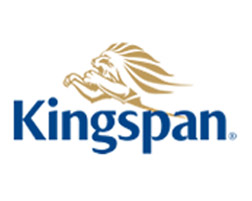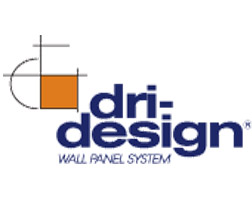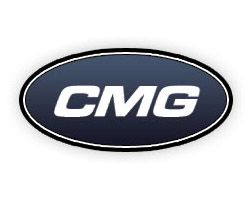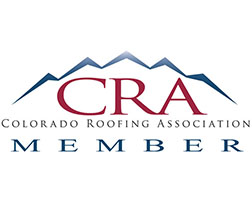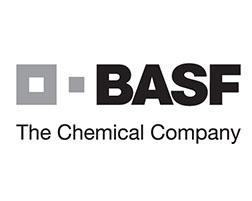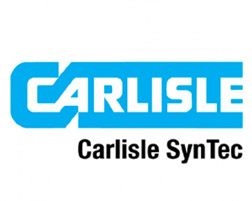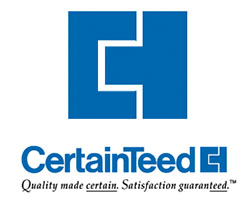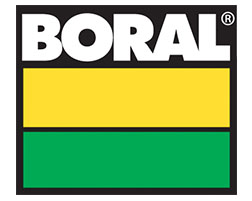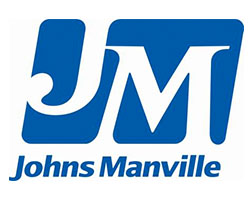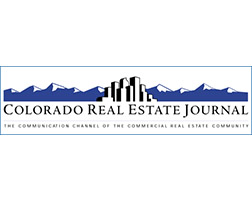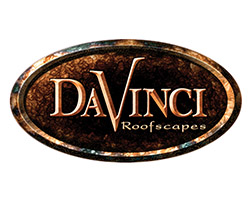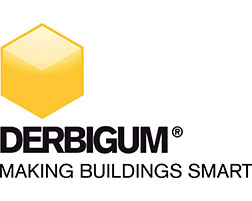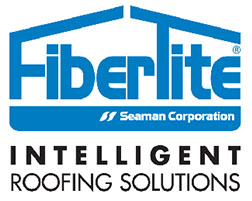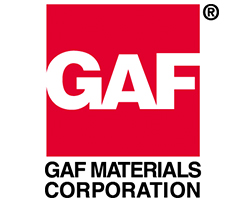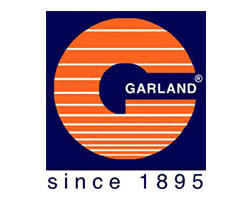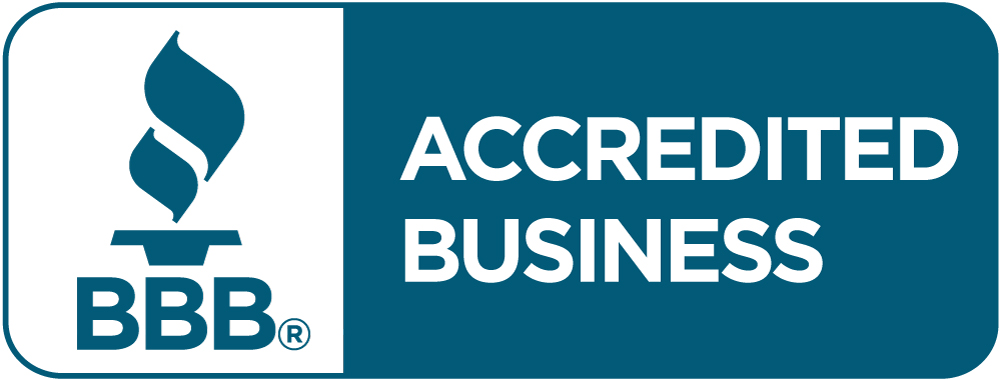Flat Roof Leaks in Heavy Rain
From residential homes to commercial buildings, flat roofs have become increasingly popular in Denver and across the Front Range due to their modern aesthetic and cost-effectiveness. Yet, when the rainy season arrives, flat roof leaks in heavy rain can become a significant issue. This guide will provide you with essential knowledge and practical solutions for preventing and fixing these leaks.
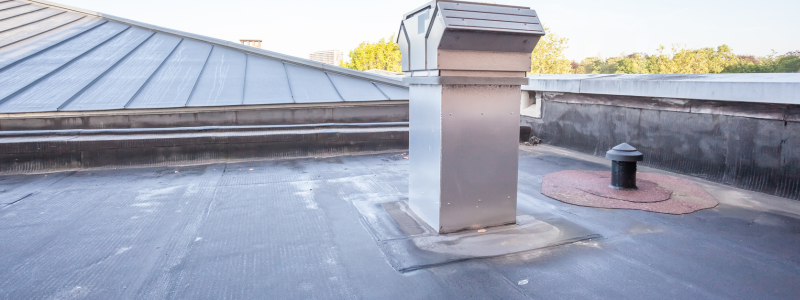
Why Flat Roofs Leak
Flat roofs, as the name implies, are not entirely flat. They have a slight pitch for water drainage. However, due to their low slope, water tends to drain slower than on other pitched roofs. Heavy rain can lead to pooling water, which increases the risk of leaks.
Here’s why:
- Aged Roofing Material: Over time, exposure to harsh weather conditions can weaken the roofing material, making it susceptible to leaks.
- Poor Drainage: Insufficient or clogged drainage systems can cause water to pool, exerting pressure on the roof and causing leaks.
- Faulty Installation: If your flat roof wasn’t installed correctly, it might have imperfections that allow water ingress.
How to Stop a Flat Roof from Leaking in the Rain
First, let’s clear up one important point. If you’re dealing with flat roof leaks in heavy rain, you’ll want to wait until the weather clears before attempting any repairs for safety reasons.
To stop a flat roof from leaking, you need to identify the source of the leak, which can be challenging as the entry point isn’t always located where the leak appears. Once the source is identified, small punctures can often be repaired with roofing cement while larger issues may require a roofing membrane or professional help from B&M Roofing.
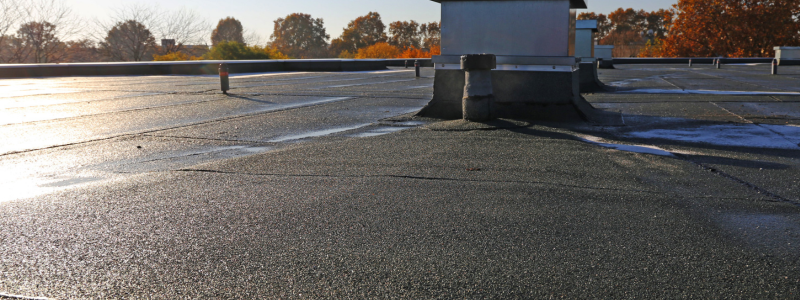
Is it Normal for Water to Puddle on a Flat Roof?
A small amount of water pooling on your flat roof for up to 48 hours after rain can be normal. This is due to the roof’s low slope which slows drainage. However, if water remains longer than this, it can lead to serious problems, including leaks and structural damage.
How to Stop Water Pooling on a Flat Roof
Stopping water pooling on a flat roof involves improving the roof’s drainage system. Here’s how:
- Regular Cleaning: Debris like leaves, branches, and dirt can clog your drains, leading to water pooling. Regular cleaning can prevent this.
- Install Additional Drains: If your current drainage system is insufficient, consider installing additional drains or scuppers.
- Create Tapered Areas: If persistent water pooling is a problem, professionals can create tapered areas on the roof to improve water flow.
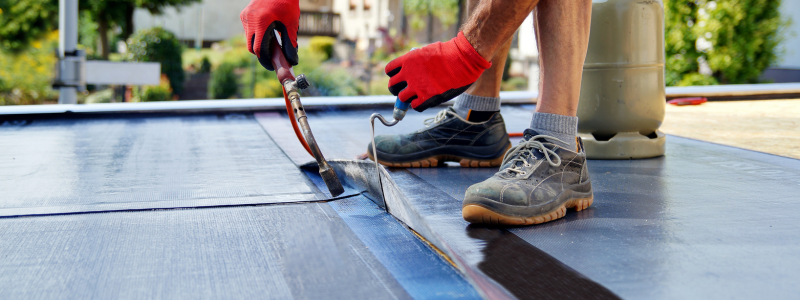
How to Waterproof and Seal a Flat Roof
Waterproofing and sealing a flat roof are essential to prevent flat roof leaks in heavy rain. There are several methods to achieve this, including:
- Roof Coating: This involves applying a waterproof coating over the entire roof. It fills cracks and crevices, providing a watertight seal.
- Modified Bitumen: This is a type of roofing material designed to be highly waterproof. It’s excellent for flat roofs in areas with heavy rainfall.
- Single-Ply Membrane: This roofing material is durable, resistant to tears, and highly waterproof.
- Regular Maintenance: Regular inspections and maintenance are key to keeping your roof waterproof. Small issues can be caught early before they become major leaks.
B&M Roofing: Colorado’s Flat Roof Experts
Flat roofs can be excellent choices for both residential and commercial buildings. However, managing and preventing leaks, particularly during heavy rain, is essential for their longevity and performance.
Remember, safety first!
If you’re dealing with leaks, professional companies like B&M Roofing are just a call away.
We are experienced in handling all types of roofing repairs, including flat roofs, metal roofs, and tile roofs, ensuring your property remains secure and dry, no matter the weather.
Hail Season in Colorado
Hail season in Colorado… Just hearing those words is enough to make any Coloradan tremble. We all know that our beloved state of Colorado is no stranger to extreme weather, and hailstorms are one of the many challenges we face here in the beautiful Front Range area. If you’ve ever experienced the fury of a hailstorm, you know the damage it can cause, especially to our homes and roofs. But fear not! B&M Roofing, your local roofing experts, are here to help you weather the storm.
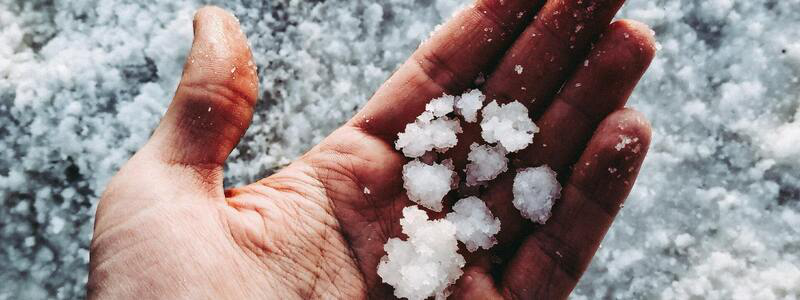
How Common is Hail in Colorado?
Colorado is located right in the heart of”Hail Alley,” a region stretching from Wyoming to Texas that sees some of the most intense hailstorms in North America.
So, it’s safe to say that hail is no stranger to our state.
But just how often do we find ourselves dodging icy pellets from the sky?
How often are hail storms in Colorado?
Hailstorms can occur at any time of the year in Colorado, but they are most common during the spring and summer months. In fact, Colorado averages about three to four major hailstorms each year. That’s right, Mother Nature can really throw one hail of a party!
In just a short length of time, maybe even just one spring/summer, you’ve likely experienced at least a few hailstorms. It’s practically a rite of passage for all Coloradans. But hey, look on the bright side – at least we have some interesting stories to tell our friends from out of state! And the pictures to prove them!
When is Hail Season in Colorado?
Hail season in Colorado typically runs from late spring to late summer (with some storms even in early fall), with the highest frequency of hailstorms occurring in May, June, July, and August. Sometimes as early as April.
It’s during this time that our unpredictable weather patterns can turn a sunny day into a hailstorm in the blink of an eye.
So, when you hear those ominous rumblings and see dark clouds gathering, it’s a good idea to keep an eye on the sky and be prepared for the possibility of hail.
What Month Has The Most Hail in Colorado?
Ah, the million-dollar question: what month brings us the most hail in Colorado?
Well, statistically speaking, July takes the crown.
It seems that summer is the season when hailstones like to make their grand entrance, causing havoc and making our roofs feel like they’re under attack.
So, if you’re planning any outdoor activities during this month, make sure you have a contingency plan in case a hailstorm decides to crash the party.

What Part of Colorado Gets the Most Hail?
Now, you might be wondering if hailstorms play favorites when it comes to the different regions of Colorado. And the answer is, yes, they do!
While hail can strike anywhere in our beautiful state, certain areas tend to see more hail than others.
So, where should you be on high alert for hail?
The Front Range
Well, lucky for us, we’re right here in the Front Range area, and boy, do we get our fair share of hailstorms. From Fort Collins to Denver and all the cities in between, we’re in the prime zone for hail. It’s like living in the middle of a giant target that Mother Nature likes to aim for. But fear not, because B&M Roofing, based right here in Frederick, is at your service to protect your roofs from hail damage.
Eastern Plains
If you venture out east towards the Plains, you’ll find another hail hotspot.
The Eastern Plains of Colorado experience frequent hailstorms, thanks to the unique weather patterns that sweep across the region. So, if you’re a proud resident of the Eastern Plains, you know the drill – keep an eye on the sky, seek shelter when necessary, and make sure your roof is prepared to withstand the hail onslaught. We do also service this region, so don’t hesitate to call us, as we’re not far away.
Mountainous Regions
Now, you might think that the mountainous regions would be safe from hail, but think again! Even our majestic mountains are not immune to hailstorms. In fact, the high elevation and unique atmospheric conditions can create perfect conditions for hail formation. So, whether you’re living in the foothills or high up in the Rockies, it’s essential to have a sturdy roof that can withstand the impact of hailstones. If you find yourself “up the hill” from us, unfortunately, we do not service your area. We are happy to give recommendations, though, if you contact us.
Protecting Your RoofDuring Hail Season
Now that we’ve established that hail season in Colorado is a force to be reckoned with, let’s talk about how you can protect your roof from hail damage. Here are a few tips to keep in mind:
- Inspect Your Roof Regularly: Before hail season hits, it’s a good idea to inspect your roof for any signs of damage or vulnerability. Look for loose or damaged shingles, cracks, or weak spots that could be susceptible to hail impact. If you’re not comfortable doing the inspection yourself, you can always rely on the experts at B&M Roofing to assess the condition of your roof.
- Consider Impact-Resistant Roofing Materials: When it comes to hail, not all roofing materials are created equal. Consider investing in impact-resistant roofing materials that are designed to withstand the force of hailstones. Options such as asphalt shingles with a higher impact resistance rating or metal roofing can provide an added layer of protection for your home.
- Maintain Proper Roof Ventilation: Adequate roof ventilation is crucial for preventing heat and moisture buildup in your attic, which can weaken the structure of your roof. Make sure your attic is properly ventilated to reduce the risk of hail damage and other roofing issues.
- Trim Trees and Overhanging Branches: During a hailstorm, overhanging branches can pose a significant risk to your roof. Trim any branches that are close to your roof or could potentially fall onto it during a storm. This will help minimize the chances of damage from falling branches and hail impact.
- Consider Impact-Resistant Skylights: Skylights can add beauty and natural light to your home, but they can also be vulnerable to hail damage. If you have skylights, consider upgrading to impact-resistant options that are designed to withstand the impact of hailstones.
- Insurance Coverage: Review your homeowner’s insurance policy to understand what coverage you have for hail damage. Ensure that your policy adequately protects your home and belongings in the event of a hailstorm. If you have any questions or concerns about your coverage, don’t hesitate to reach out to your insurance provider.
Trust B&M Roofing for Your Hail-Related Roofing Needs
When it comes to hail season in Colorado, having a reliable and local roofing partner can make all the difference. That’s where B&M Roofing comes in. As your trusted roofing experts in the Front Range area, we understand the unique challenges posed by hailstorms, and we’re here to help you navigate through them.
Here’s why choosing B&M Roofing for your hail-related roofing needs is a smart move:
- Local Expertise: We are a local company based in Frederick, Colorado. Being in the heart of the Front Range area allows us to respond quickly and effectively to any roofing emergencies or hail-related issues. We know the ins and outs of Colorado weather and the specific needs of roofs in our region.
- Timely Response: When hail strikes, time is of the essence. With B&M Roofing, you can count on us to respond promptly to your roofing needs. We understand the urgency and will work diligently to assess and repair any hail damage to your roof.
- Quality Workmanship: We take pride in our work and strive for excellence in every project we undertake. Our experienced roofing professionals are skilled in identifying and repairing hail damage, ensuring that your roof is restored to its optimal condition.
- Customer Satisfaction: Our customers are at the heart of everything we do. We believe in building strong relationships based on trust, transparency, and exceptional customer service. We’ll guide you through the entire process, from the initial assessment to the final repairs, ensuring your satisfaction every step of the way.
Remember, hail season in Colorado may be unpredictable, but you can take proactive steps to protect your roof and minimize the impact of hailstorms. And when you need a reliable roofing partner, B&M Roofing is just a call away.
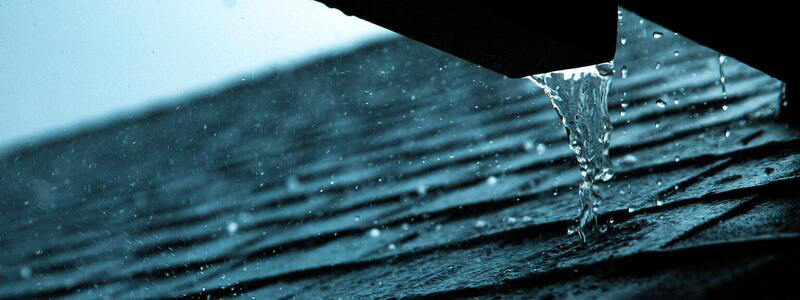
Don’t let hailstorms rain on your parade. Reach out to B&M Roofing today and let us help you weather the storm with confidence!
Call us today at 303.938.9642 to schedule a visit from our emergency repair team or visit our leak repair request page to submit your information and have one of our team members contact you.
Our 24/7 support line is here to help immediately with emergency roof repair. Calling sooner means less of a wait and more opportunities to repair before extensive damage is done. We offer work throughout Colorado, including:
- Denver
- Colorado Springs
- Fort Collins
- Boulder
- Greeley
- Rocky Mountain areas
- Surrounding states including Wyoming, Utah, Kansas, Nebraska
Best Roof For Hail
Hailstorms can cause significant damage to homes and property. Hailstones can range from golf ball size to baseball-sized. The force of these stones can break windows, shatter glass doors, and even dent vehicles.
There are some areas such as Colorado that are prone to hail during April and into July. Therefore, having the best roof for hail will provide protection and help anticipates the damage. There are several types of roofs that can withstand strong winds and heavy rain.
In this article, we will be discussing what are the best roofs and materials that will endure hail.
Damage Caused by Hail on The Roof
In Colorado, you will be familiar with the damage that hail can cause to your roofs. Even though a hailstorm may only last a couple of minutes, it can cause disastrous damage in that short amount of time to your roof.
Hail can do multiple things to your roof, it can not only damage your roof but also damage other elements of the roof. Such as the chimney, gutters, vents, and skylights. Alongside that, hail can crack the shingles, (except the hail resistant shingles) and weaken the seals on your roof, just to name a few.
All of these things then lead to leaks starting to form in our roof, which can lead to further damage in your home. As a result, it is important to stay on top of any damage that is caused to your roof. Thus, if you notice any damage to your roof or suspect any damage, then you call a professional to inspect your roof.
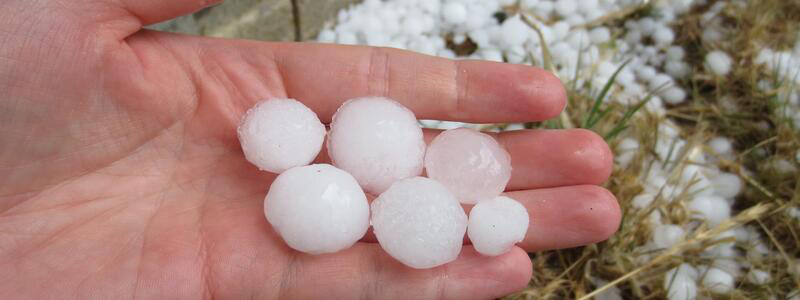
What Is The Best Roof for Hail Storms?
There are many kinds of best roofs for hail storms that can be used for protecting your home. Some of them include:
Metal Roofs
Metal roofs have been around for years, and they still remain one of the most popular best roof for hail. They are made out of metal sheets that are attached together with screws, nails, etc. Metal roofs are very durable and long-lasting, which makes them an excellent choice for protecting your home from severe weather conditions. However, there are some cons associated with using metal roofs. One of the main con there is the chance that if the hail is big enough, it can dent the roof, especially if you have a flat roof.
Thicker metal panels are much more durable as they can deflect the hail. Yet over time, the impact of multiple hail storms will begin to show.
Impact-Resistant Shingles
Asphalt shingles are a popular choice for residential roofs, and luckily, there are impact-resistant options available. These shingles are specially designed to withstand the force of hailstones. They are constructed with reinforced fiberglass matting and have a higher impact resistance rating than standard shingles. Impact-resistant shingles can help minimize the risk of damage and prolong the lifespan of your roof.
Slate or Tile Roofs
Slate and tile roofs are renowned for their resilience and longevity. These materials have a natural resistance to hail damage due to their solid and robust composition. Slate and tile roofs can withstand the impact of hailstones without sustaining significant damage. While they may be a higher initial investment, they offer exceptional durability and an elegant appearance.
Rubber/EuroShield Roofs
Synthetic roofing materials, such as synthetic slate or rubberized shingles, are gaining popularity due to their hail-resistant properties. These materials are engineered to mimic the look and durability of natural materials while providing additional impact resistance. They can withstand hailstorms without cracking or breaking, offering excellent protection for your home.
These rubber roofs are very sturdy as they absorb all the impact caused by the hail. Thus, the hail easily bounces off the roof. Alongside that, rubber roofs are made from recycled tires and come in various styles and colors. Yet, they are an eco-friendly option that are also very low maintenance.
Tile Roofs
Tile roofs can be made from slate, clay, concrete, or ceramic and will last for many years. This type of roof is ideal for hailstones that are smaller than 2 inches. However, if the hail is any bigger, then the chances of the tiles breaking or chipping is increased, which may also not be covered by some insurance companies.
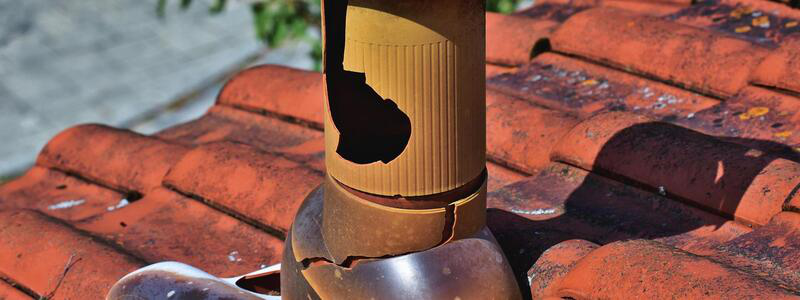
Class 4 Hail Resistant Metal Roof
A class 4 hail-resistant metal roof is the highest impact rated roof you can get your hands on. They can withstand hail that is around 2 inches big. Often these roofs are made from aluminum, copper, asphalt, plastic or resin shingles.
These roofs can also stand 110 miles per hour winds and are a great long term investment. If you want a roof that will give you long-term protection from hailstorms, then you may want to consider a class 4 roof. Especially, as their impact rating is so high, you will have to spend less money on this roof for maintenance or replacement costs.
F-Wave Roofs
An F-wave roof is another low-maintenance roof that is very durable and lightweight. They also have a class 4 hail rating and can withstand 130 miles per hour winds. When you purchase an F-wave roof there is the option to have roofs that look similar to slate, asphalt or cedar shakes.
An F-wave roof is one of the few roofs that have a hail warranty, which is very handy when it comes to living in Colorado.
What Materials Are Hail Proof?
Hailstorms can wreak havoc on our homes, causing extensive damage to roofs and leaving us with hefty repair bills. Therefore, it’s natural to wonder if there are any materials that are hail-proof. While no material can claim to be completely immune to hail damage, some options offer higher levels of resistance than others. Let’s explore a few materials known for their hail-resistant properties:
- Metal Roofing: Metal roofs, typically made of steel, aluminum, or copper, are highly regarded for their durability and resilience. Metal panels are inherently strong and can withstand the impact of hailstones. Additionally, their smooth and slippery surfaces allow hail to slide off more easily, reducing the risk of damage. Metal roofs are a popular choice in hail-prone areas due to their ability to deflect hailstones and minimize potential harm.
- Stone-Coated Steel: Stone-coated steel roofing combines the strength of metal with a protective layer of stone chips. This combination creates a highly durable and hail-resistant material. The stone coating adds an extra layer of protection against hail impact and helps to absorb and distribute the force. Stone-coated steel roofs are an excellent choice for areas susceptible to severe hailstorms.
- Synthetic Roofing Materials: Synthetic roofing materials, such as synthetic slate, rubberized shingles, or polymer-based tiles, offer a hail-resistant alternative to natural materials. These synthetic options are engineered to withstand the impact of hailstones without cracking or breaking. They are designed to be flexible and durable, providing a high level of resistance to hail damage. Synthetic roofing materials are a popular choice for homeowners seeking both durability and aesthetic appeal.
- Concrete and Clay Tiles: Concrete and clay tiles are known for their robustness and ability to withstand harsh weather conditions. These tiles are naturally resistant to hail impact due to their solid composition. The density and thickness of concrete and clay tiles provide excellent protection against hail damage. However, it’s worth noting that extremely large hailstones or severe hailstorms can still cause some level of damage to these materials.
While these materials offer a higher level of hail resistance compared to others, it’s important to remember that no roof is entirely hail-proof.
In severe hailstorms with unusually large hailstones, even the most resilient materials can sustain some damage. However, choosing hail-resistant materials can significantly reduce the risk and extent of damage to your roof.
When considering hail-resistant materials, it’s essential to consult with roofing professionals who have expertise in hail-prone regions. They can provide guidance on the best materials for your specific climate and help you make an informed decision based on your needs and budget.
Are Metal Roofs The Best for Hail Storms?
Yes, metal roofs are better for hail because they are very durable and strong. As we mentioned before, the only thing that could damage a metal roof is a large hail storm. Even then, the chances of damaging the roof are minimal.
Metal roofs are also very easy to install and maintain. You do not need to worry about any special tools or skills needed to install a metal roof. All you need to do is attach the metal sheets together with screws, nails etc. Once the roof is installed, you just need to make sure that you keep it clean and free of debris.
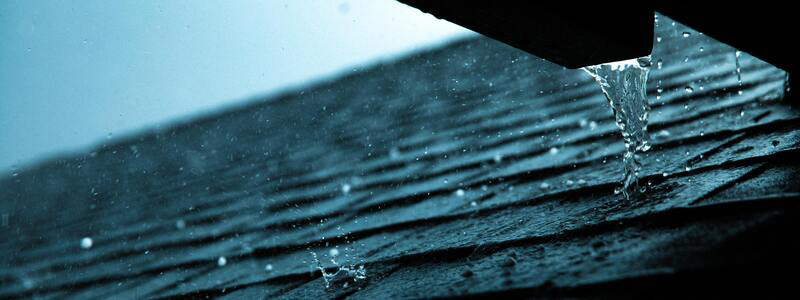
What Can I Do To Protect My Roof From Hail?
If you live in an area where hail storms are common, then you should take steps to protect your roof against the effects of hailstorms. The best way to do this is to choose a good roof system for your home. A roof that has been designed specifically for hail resistance will help to protect your home from hailstorms.
Alongside that, when the weather is nice, you should keep your trees and shrubs maintained. If you have tall trees, then you should remove any branches that are considered weak. Otherwise, when a hail storm occurs, these branches could fall down and damage your roof.
Your home also needs to be protected by hail alongside your roof. To protect the rest of your home, you should close any blinds or curtains so that if any windows break during the storm, no glass will be blown into your home. Also, hinge shutters are a great idea to have installed. This is because they are much easier to repair or replace than a broken window.
Finally, any outdoor furniture must be put under a covered area or brought inside to keep them safe. Also close all tarps, umbrellas or canopies in the garden. Otherwise, the hail storm will destroy the fabric. So it’s best to keep them closed.
Protect Your Roof with B&M Roofing Colorado
In Colorado, hail storms are very popular and can cause a lot of damage to your roof. Hence, having a metal or rubber roofs could help prevent your roof from being damaged due to hail.
At B&M Roofing, we inspect your roofs for hail damage, and offer you durable and hail resistant materials to be used on your roofs. We will also offer you preventive measures in the spring before the hail season.
Call us today at 303.938.9642 to schedule a visit from our emergency repair team or visit our leak repair request page to submit your information and have one of our team members contact you.
Our 24/7 support line is here to help immediately with emergency roof repair. Calling sooner means less of a wait and more opportunities to repair before extensive damage is done. We offer work throughout Colorado, including:
- Denver
- Colorado Springs
- Fort Collins
- Boulder
- Greeley
- Rocky Mountain areas
- Surrounding states including Wyoming, Utah, Kansas, Nebraska
Common Roof Pitch
At B&M Roofing, we understand that a roof’s pitch is one of the most crucial aspects of roof design. It’s not just about how it looks; the pitch plays a vital role in how effectively water, ice, and snow are drained away. A well-considered roof pitch can also influence maintenance time and costs, making it a key factor in our recommendations. Additionally, the pitch can determine which materials are suitable for your roof. In Colorado, we often see specific pitches that work best for both commercial and residential properties. Let us help you select the ideal pitch for your roofing needs.
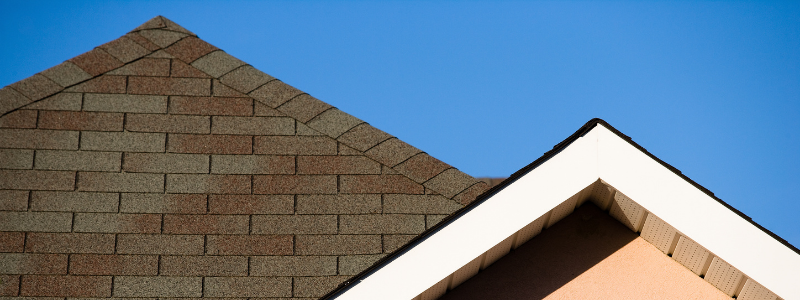
What is Roof Pitch?
The pitch is the slope, slant, or angle of your roof.
It is usually expressed as a rise in inches for every horizontal foot of length. So, a 6/12 roof would have a vertical rise of six inches per horizontal foot.
When architects design a roof’s pitch, they must consider several key factors: the weight of the roofing materials, the projected lifespan of the roof, the associated costs, the required maintenance, and the roof’s appearance.
Most Common Roof Pitch for Residential Buildings
Conventional slope roofs are most common with residential roofs.
This means the slope has a pitch between 4/12 and 9/12 on most homes.
Roofs with a pitch exceeding 9/12 are referred to as steep-slope roofs.
Steep-slope roofs are used for their aesthetic appeal and also offer several other benefits.
Most Common Roof Pitch for Commercial Buildings
Roofs on commercial buildings typically have a lower slope than those on houses.
A typical low-slope roof has a pitch between 2/12 and 4/12.
A roof slope of under 2/12 is considered flat. Technically, it does have some slope.
For drainage, the minimum slope must be at least ¼” per foot.
Designers of commercial buildings often use low-slope roofs because they are less expensive.
Low-slope roofs are often used on large buildings, such as factories and warehouses.
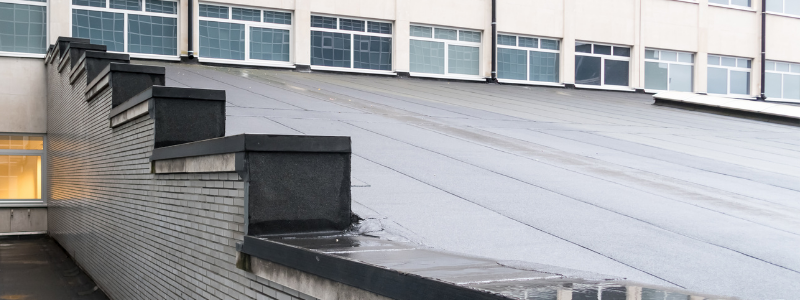
Why Opt For a Steeper Slope?
Steeper sloped roofs are visually pleasing. They also last longer because water doesn’t accumulate.
Water, melting snow, and ice will run off immediately. This prevents ice damming.
Steeper-sloped roofs are more expensive.
They require more materials and more labor. For some taller or larger structures, a steep slope isn’t practical.
Relationship Between Materials and Pitch
Roof material selection largely depends on the roof slope. Single-ply or torch-down roofs aren’t suitable for steep hills, while shingles and tiles aren’t recommended for low-slope roofs. Shingles and tiles perform well on slopes of 4/12 or higher.
Asphalt shingles are cost-effective but have a shorter lifespan of 20 to 50 years, depending on conditions. They are lightweight and versatile, making them popular in North America; however, special installation techniques are required for low-slope roofs (2/12 to 4/12).
Clay, natural slate, and concrete tiles offer durability and can last a lifetime when installed correctly. However, they are heavy (900 to 1,200 pounds per 100 square feet) and costly, with clay tiles priced between $6 and $10 per square foot, while slate is pricier.
Metal roofing, made from painted aluminum or steel, is lightweight (ranging from 40 to 135 pounds per 100 square feet) and suitable for any pitch. Aluminum is increasingly popular due to its resistance to rust and its ability to mimic other materials. It’s also eco-friendly and long-lasting, though costs vary.
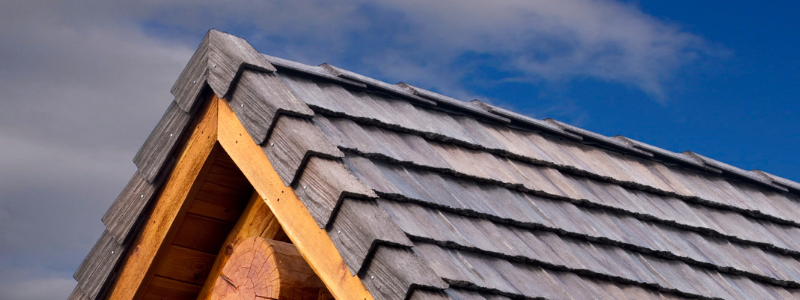
Common Roof Pitch Mistakes
Pitching a roof too steep or too low for the building and Colorado climate is a common mistake.
A minimum slope of four units of rise per twelve units of run is crucial if you are using asphalt, wood, or tile shingles or shakes.
Another is choosing roofing materials that don’t match the roof slope. This can result in water leaking into your home or business.
- Failing to consider the winter climate can result in building water damage or even roof collapse.
Never assume that the slope that works on one home or business will work on all structures.
Colorado’s Unique Climate and Weather Patterns
Colorado experiences a unique climate and weather patterns that have a significant impact on roof design and pitch. Understanding these factors is crucial when considering the construction or renovation of roofs in the region.
Here are some essential points to note regarding Colorado’s climate and how it affects roof design:
- High Altitude Effects: Due to its higher altitudes, Colorado experiences variations in air pressure, solar radiation, density, oxygen levels, temperature, and atmospheric water vapor. These factors can lead to increased wear and tear on roofs, making routine maintenance essential for extending their lifespan.
- Winter Challenges: Colorado is renowned for its heavy snowfall, which poses the risk of ice dams. Ice dams form when melting snow is blocked from draining, leading to potential water damage. To prevent this, it’s crucial to have a roof pitch steep enough to allow water to drain effectively.
- Sun Exposure and UV Radiation: Colorado boasts approximately 300 sunny days annually. While this is appealing, it also means that roofs endure prolonged exposure to intense sunlight and UV radiation. This can accelerate the deterioration of roofing materials over time, making it crucial to choose appropriate materials that can withstand these conditions.
- Extreme Temperature Fluctuations: Colorado’s climate is characterized by significant temperature fluctuations, with hot summers and cold winters. These extreme temperature changes can cause the expansion and contraction of roofing materials, potentially leading to roof damage if not adequately accounted for during the design and installation process.
- Proper Insulation and Ventilation: Insulation and ventilation play a vital role in maintaining the durability and performance of roofs in Colorado. Proper insulation helps regulate indoor temperature and prevents heat loss. In contrast, adequate ventilation prevents moisture buildup and reduces the risk of condensation-related issues, such as mold and rot.
- Expert Guidance: Given the specific challenges posed by Colorado’s climate, it’s advisable to consult with roofing specialists who are knowledgeable about the region’s weather patterns and can provide guidance on optimal roof pitch, materials, insulation, and ventilation systems.
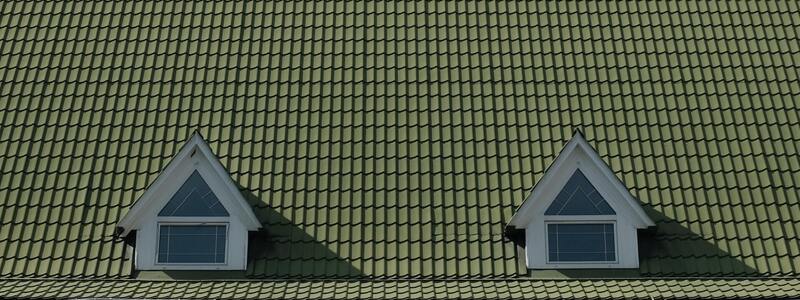
How Can B&M Roofing Help?
Your roof protects your family or your business. It needs to be installed with materials that fit the roof slope. We are familiar with the most common roof pitch in Colorado. We will recommend the best for your residential or commercial property.
Regular maintenance, including regular inspections, cleaning, and repairs, can extend the roof’s lifespan and prevent costly repairs. Business owners can follow these commercial roof maintenance tips to keep their commercial roofs in good condition, ensuring the longevity and performance of their buildings.
B&M Roofing’s roofing services offer exceptional expertise and experience in a wide range of roofing materials, including metal, shingles, tile, low-slope, asphalt, and more. We offer skilled, professional, and dependable roofing services in Colorado.
For more information about the best materials and installation for your roof pitch or to inquire about a free estimate, contact us now.
Types of Commercial Flat Roofs
Flat roofs are oftentimes seen on most commercial buildings because of their productivity and practical cost. The assortment of flat roofing options has developed considerably over the years. There are many types of commercial flat roofs available, but some options aren’t necessary for certain buildings.
With so many options available, it can be a little overwhelming and confusing to determine which commercial flat roof will work best for your building’s needs. You will most likely be dealing with these kinds of roofs if you’re the owner of a commercial building. Commercial flat roofs are a bit of a specialized area of expertise so it can be difficult to understand what you’re getting into, which is why we are here to help at B&M Roofing!
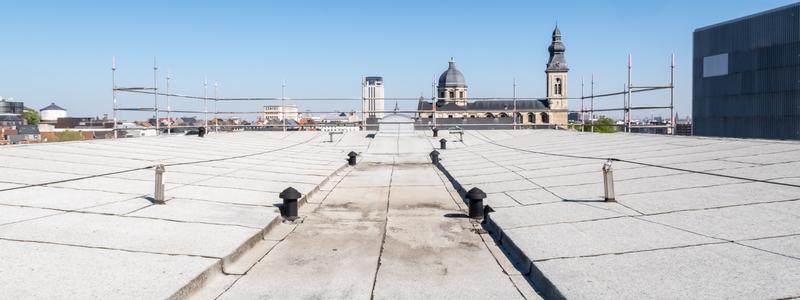
Although simple and utilitarian, the main goal of a roof system is to maintain the watertight integrity of a building and keep its contents dry.
What is a Commercial Flat Roof?
A commercial flat roof is a type of roof that is almost level or has a very slight pitch, usually less than 10 degrees. Unlike pitched roofs, which have a steep slope to allow water to run off, flat roofs are generally horizontal or have a slight slope to allow water to drain toward gutters and drains.
Commercial Flat Roof Components
Many modern businesses and even some residences have a commercial flat roof protecting them from the elements . Each commercial roof component serves its own specific purpose. The construction of commercial flat roofs follows three fundamental components:
- Weatherproofing: To keep the elements outside.
- Reinforcement: To provide structural integrity to the roof.
- Surfacing: To protect the rest of the roof from sunlight and weather.
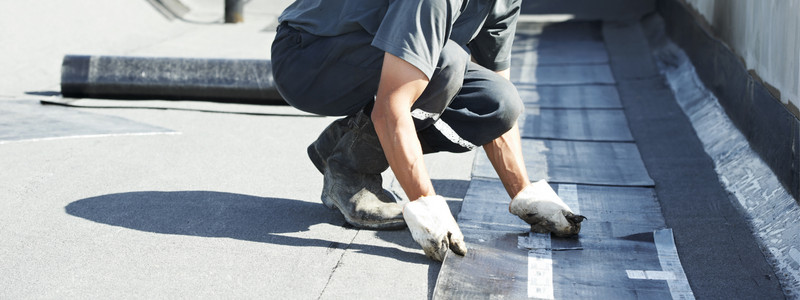
Commercial Flat Roof Types
When it comes to choosing a commercial flat roofing material, there are several options available. Each material has its advantages and disadvantages, so it’s essential to consider your needs and budget before making a decision. Remember that no matter what type of roof you choose, you will need to maintain your commercial roof to keep it in good condition. Here are some common commercial flat roofing materials and their characteristics.
Built-Up Roofing (BUR):
- Also known as a tar-and-gravel roof, this is a traditional flat roofing system that uses layers of asphalt and roofing felt alternated with hot tar to create a durable and waterproof surface. These roofs are fire-resistant, low maintenance, and can last 20 years or more. These roofs don’t hold up as well as others to adverse weather conditions when compared with other types of commercial flat roofs.
Metal Roofing
- Metal roofing uses metal panels in place of shingles. The roofing panels are made from steel, aluminum, copper, or zinc. These roofs are durable and can last up to 50+ years, resistant to weather, are energy-efficient, require low maintenance, and are aesthetically pleasing. Metal roofing comes in a variety of styles and colors, and can be designed to match the style of the building. These roofs are more expensive than traditional roofing materials, tend to be noisier during storms, and their installation requires specialized equipment.
Thermoset EPDM Roof Membrane (EPDM)
- Thermoset EPDM roofing membranes are made from synthetic rubber and are commonly used as a roofing material for low-slope or flat roofs. The membrane is installed in large sheets glued or fastened to the roof deck. EPDM roofs can last 40+ years, are resistant to weathering, ultraviolet radiation, and ozone, they reflect heat and light, which helps to reduce cooling costs in the summer, and are low maintenance. EPDM roofing membranes are more expensive than other roofing materials, require specialized knowledge to install properly, and are at risk to punctures by sharp objects.
Thermoplastic Olefin (TPO) Roof:
- Thermoplastic Olefin, or TPO roofing, is a type of roofing material that is commonly used in commercial and industrial buildings. TPO is a single-ply roofing membrane made of a blend of plastic and rubber materials. The material is lightweight, flexible, and resistant to weathering, making it an ideal choice for flat or low-slope roofs. TPO roofs reflect heat and light, reducing cooling costs, reszist harsh weather, and installation is easy. This roof type is less expensive than some other roofing options, and is environmentally friendly and recyclable. This type of commercial roofing is vulnerable to punctures by sharp objects and exposure to extreme weather conditions. TPO roofs come in white or light colors.
Polyvinyl Chloride (PVC) Roof:
- PVC roofing a synthetic plastic polymer reinforced with polyester and fiberglass materials. The material is flexible, durable, and resistant to weathering, making it an ideal choice for flat or low-slope roofs. These types of commercial flat roofs reflect heat and light, are energy efficient, highly durable, fire-resistant, and are easily installed with heat-welded seams. This type of roof is typically more expensive than other roofing materials such as TPO or EPDM. Typically only available in white or light colors, these roofs can have negative environmental impacts due to its manufacturing process.
Spray Polyurethane Foam (SPF):
- SPF roofing is a combination of two liquid chemicals: polyol and isocyanate. The spraying of these chemicals onto the roof surface forms a seamless, waterproof layer. This type of roofing is a popular choice for commercial flat roofs due to its many benefits. SPF roofing has many advantages such as energy efficiency, durability, waterproofing, sustainability, and customization. These roofs provides excellent insulation, can last up to 50 years, are environmentally friendly. However, they require regular maintenance, and the chemicals used in SPF roofing can be hazardous if not handled properly.
Green Roofing
- Living roofing, also known as green roofing, is a roofing system that incorporates vegetation into the roof design. Green roofs offer several advantages, including environmental benefits such as reducing the urban heat island effect and providing natural habitats for wildlife, energy efficiency by providing insulation, aesthetic appeal with visually stunning exteriors, and longevity, lasting up to 40 years. Green roofs have higher installation and maintenance costs, potential to add weight to a building, and a risk of leaks.
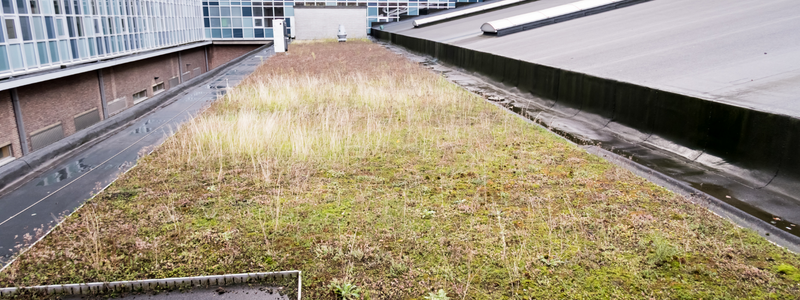
B&M Roofing – Commercial Building Roof Design
B&M Roofing is a Colorado-based business with over seventy years of effective installations of many types of commercial flat roofs. We have gained notoriety for being quick, productive, and efficient in our work. We are proud to provide skilled roofing assistance to thousands of Coloradoans every year. No matter what kind of roofing services you may need, our team at B&M Roofing is happy to help!
We are here to help with your commercial flat roofing needs. Contact us today to set up services for your roof!
Commercial Roof Maintenance Tips
As business owners, you’ve got your hands full with finances, employees, and everything. It’s easy to forget about the roof, but maintaining it is crucial to protect your building, assets, and employees. Keeping your roof in top shape means a longer lifespan, better performance, and fewer costly repairs.
Please don’t wait until it’s too late to take care of your roof! This article uncovers the secrets to keeping your commercial roof in excellent condition for years. Discover the simple commercial roof maintenance tips that make a big difference, from keeping track of maintenance logs to regularly unclogging gutters and drains. So why wait? Take control of your roof’s future today and ensure its longevity!
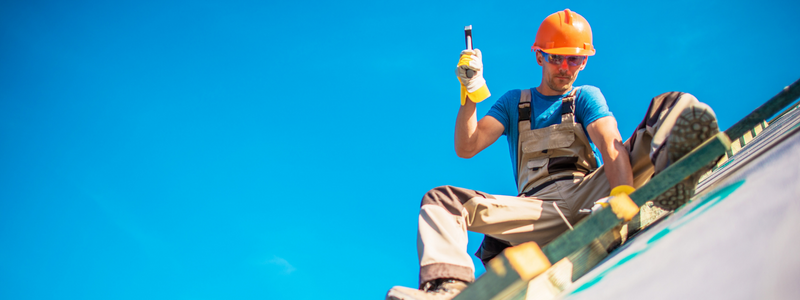
No matter what type of commercial roof your business has, it will need maintenance. Learn more about some recommended roof maintenance tips and tricks below.
Advice for Commercial Roof Care
Commercial roofs come in various designs, each with specific features and maintenance requirements. It’s essential to consider the particular needs of your building and business when choosing a commercial roof type. You may be wondering how much does commercial roofing costs? A professional roofing contractor like B&M roofing services can help you determine the best option for your situation.
The following are a few typical styles of business roofs:
Flat Roofs
- Flat roofs are made of various materials such as built-up roofing, single-ply membrane, or spray foam and provide a flat, level surface. These are the most common commercial roofs found on most low-rise commercial buildings. Flat roofs are easy to access but require regular maintenance to prevent leaks.
Membrane Roofs
- Membrane roofs are made of synthetic materials, such as PVC or TPO, and are famous for their durability and energy efficiency. They are an excellent choice for businesses looking for a low-maintenance roofing option.
Metal Roofs
- Made of materials such as aluminum, steel, or copper, metal roofs are durable and long lasting, making them a popular choice for commercial buildings. They are also energy-efficient and fire-resistant, providing additional benefits for business owners.
Built-Up Roofs
- Built-up roofs comprise multiple layers of asphalt, gravel, and tar and are commonly on flat commercial roofs. They are a cost-effective option but require regular maintenance to keep them in good condition.
Modified Bitumen Roofs
- Modified bitumen roofs are similar to built-up roofs and are made of asphalt and a fiberglass or polyester reinforcement layer. They are durable and easy to install, making them a popular choice for commercial buildings.
Shingle Roofs
- These roofs, which come in various sizes, forms, and colors, are built of asphalt or composite materials. They are well-liked since they are inexpensive and straightforward to install.
Wood Shake Roofs
- These roofs have a rustic, natural appearance and are composed of natural wood like cedar, redwood, or pine. They are pricey compared to other roofing solutions but have a long lifespan and need regular maintenance.

Tips for Maintaining A Commercial Roof
Maintaining a commercial roof ensures longevity and protects the building’s interior. Regular inspections, cleaning, and repairs can help prevent leaks and prolong the roof’s lifespan. Here are some commercial roof maintenance tips and tricks:
Commercial Roof Maintenance Checklist
- Keeping records of all roof maintenance activities is critical. This log should include the date of inspection, any repairs made, the type of repair, and the cost. This information can help you track trends and determine the areas of concern that need addressing. Maintaining a roof maintenance log ensures the roof is adequately cared for and provides a clear history.
Get Leaks Fixed Right Away
- Leaking roofs can cause significant damage to the building’s interior, leading to costly repairs. As soon as you notice a leak, it would be best to take immediate action to repair it. Even for residential structures, you can call B&M commercial roofing services to diagnose the problem and make necessary repairs.
Get Your Roof Inspected Twice a Year
- Regular roof inspections are crucial to maintaining the health of your commercial roof. During these inspections, the top undergoes thorough examination for any damage, leaks, or other issues. The best times to inspect your roof are in the spring and fall, before and after extreme weather conditions. Regular inspections help catch problems early and prevent them from becoming more extensive and expensive.
Avoid Walking on the Roof
- Walking on the roof can cause significant damage to the roofing material, especially if its design is for pedestrian traffic. It is essential to only walk on it when it’s necessary for maintenance or repair purposes. When walking on the roof, use caution and take steps to minimize damage.
Check Your Roof after Bad Storms
- After a severe storm, inspecting your roof for damage is essential. Look for missing or damaged shingles, cracks, punctures, and other signs of wear. If you notice any problems, it is necessary to repair them as soon as possible to prevent further damage.
Commercial Roof Preservation
- Dirt, debris, and other materials can accumulate on the roof over time, reducing its performance and causing damage. Regular roof cleaning can help prevent this and is an integral part of regular roof maintenance. You can clean your roof using a broom or a blower, but be sure to use caution and avoid causing damage to the roofing material.
Regularly Unclog Gutters and Drains
- Clogged gutters and drains can cause water to back up, causing damage to the roof and building. Regularly cleaning your gutters and drains is essential to roof maintenance and prevents this damage. Make sure to clear any debris, leaves, and other materials clogging the gutters and drains, and check them regularly to ensure they are functioning correctly.
Prune Overhanging Tree Branches
- Overhanging tree branches can damage the roof by scratching or puncturing the roofing material. Regularly pruning tree branches near the roof can help prevent this damage. When pruning, take care to avoid damaging the roof and make sure to clean up any debris that may have fallen on the roof.
Get Snow Cleared in Winter Months
- Snow can cause significant damage to a commercial roof, especially if it stays on it for an extended period. Snow can also cause the roof to collapse if too much weight is on it. It is essential to have the snow cleared from the roof as soon as possible to prevent this from happening. You can do this by using a snow rake or hiring a professional to remove the snow.
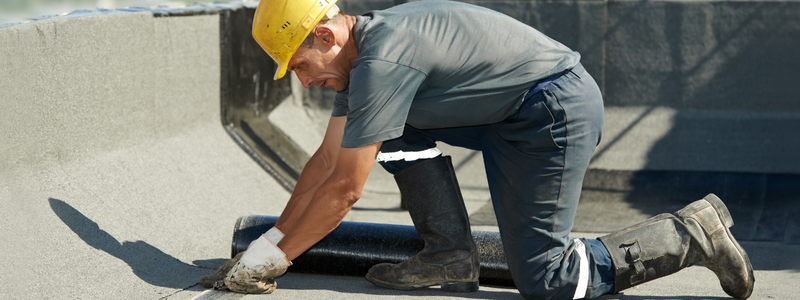
Commercial Roof Maintenance Tips in Colorado
Maintaining a commercial roof is essential to building ownership.
Regular maintenance, such as regular inspections, cleaning, and repairs, can extend the roof’s life and prevent costly repairs. Business owners can follow these commercial roof maintenance tips to keep their commercial roofs in good condition, ensuring the longevity and performance of their buildings.
B&M roofing services bring exceptional expertise and experience in roofing materials, including metal, shingles, tile, low slope, asphalt, and more. We offer skilled professional and dependable roofing services in Colorado.
Roofing Companies Denver
There are different roofing companies in Denver, Colorado, and B&M Roofing is one of the industry leaders. These roofing companies render different services, ranging from commercial to residential. So, irrespective of your roofing needs, a roofing company in Denver, Colorado, can cater to your needs.
But what exactly can you expect from these roofing companies in Denver? Is it important to hire one? And who are the top roofers in Denver? This article answers these questions and more.

What Do Roofing Companies Do in Colorado?
Before discussing what roofing companies do in Colorado, it is essential to explain the different types of roofers there are in Denver, Colorado.
- Commercial Roofers: Commercial roofing services focuses on installing or replacing flat roofs and other industrial applications. They focus primarily on commercial construction and sometimes carry out residential projects.
- Residential Roofers: As the name implies, residential roofing services focus on personal homes. Residential roofers work on shingle and metal roof installation, maintenance, repair, and replacement.
- Industrial Roofers: Industrial roofing services deal with maintaining and repairing industrial roofs. Industrial roofers focus on metal roofs and industrial applications.
- Roofing Contractors: This refers to roofers who work on commercial and residential buildings. If you need a general contractor, it is best to go with roofing contractors in Denver, as they have experience in both roofing types. Also, roofing contractors act as a one-stop shop for all your roofing needs.
Now, what do these roofing companies in Colorado do?
Roof Installation
Roof installation is quite common, and it involves putting a new roof on your house or business structure. Installing a new roof takes time and requires the expertise of seasoned roofers. So, carefully choose the roofing company to handle this project.
Roof Repair
Roof repair is another common service rendered by roofing companies in Denver. However, unlike roof installation, the focus here is on fixing any damaged part of your roof. For this to happen, the roofing contractor will assess the damage and tell you what repair the roof needs.
Roof Replacement
Replacement is different from repair. Here, you might have to haul an entire section rather than fix a damaged part of the roof. This makes roof replacement a job for the experts, so hire a reputable roofing company.
Removal of Waste and Cleaning of Debris
Most roofing companies offer waste removal and cleaning of debris on the rooftop as part of their services. This service is particularly sought after a heavy storm or other acts of nature damage the rooftop.
Emergency Services
Colorado is no stranger to storms like hail, tornados, snow storms, etc., and it causes severe damage to rooftops. You can contact a roofing contractor that renders emergency services in such instances. These services are available all week long for 24 hours.
Why Is It Important to Hire a Roofing Company in Denver?
Aside from using top-notch roofing materials when roofing your home, the roofing contractor you work with ensures you get a well-installed roof. To this end, it is prudent to work with a local roofing company in Denver. The following are several reasons why you should choose a local roofer:
- You can verify their licenses and references, as local businesses thrive on referrals.
- Local roofing companies in Denver know local building codes that must be met. Therefore, there are fewer avenues for issues with non-compliance, which might delay your roofing project.
- Working with local roofers gives you access to quick and prompt service delivery. Also, you can contact them easily or visit their office if there’s an issue with the roof.
- You get easy access to emergency services in case of storms or serious accidents that impact your roof.
- You get better-personalized service as local Denver roofers dedicate their time to their customers, something roofing companies outside the may be unable to offer.
Do Commercial Roofers Need to be Licensed in Denver?
Yes. Generally, Colorado classifies roofing contractors — including commercial roofers — as general contractors. As such, they are not required to carry a special state license. However, they must have a business license, which shows that the company has been active for a minimum of two years.
A roofing company must have a valid and current business license to obtain a permit for an extensive project. In addition to the preceding, they must carry a Class D-Roof Covering and Waterproofing license. If the roofing project involves significant structural work, the roofing contractor needs a Class A or Class B General Contractor License.
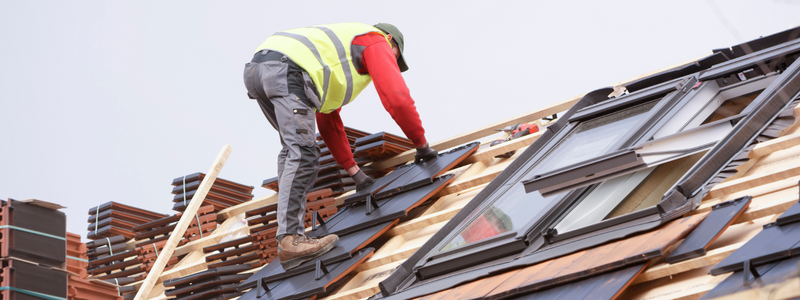
How to Select the Best Roofing Company in Denver
Just because a roofing company is one of the best in Denver does not mean they are the right fit for you. So how do you select the best roofing company for your needs?
Here are some helpful tips:
- Research the company online and check past client reviews
- Speak to your neighbors and ask them the company that handles their roofing job
- Visit the company’s website to familiarize yourself with their services
- Find out the company’s years and level of experience
- Compare prices with other roofing companies in Denver
- Interview the roofing company and stay objective
- Check to see if the company has a free estimate system
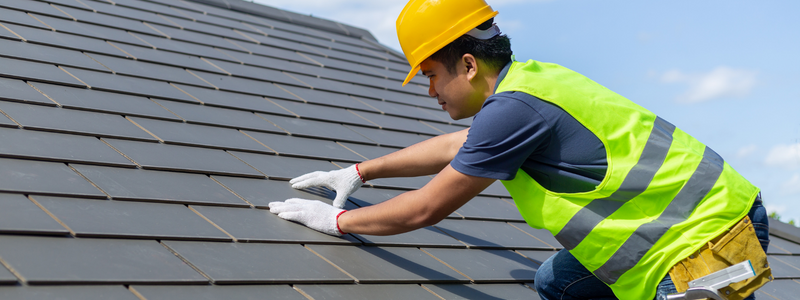
Trust B&M Roofing With Your Roofing Needs
At B&M Roofing, we are committed to rendering top-notch services to all our residential and commercial clients. We are available all year, whether you need repairs, installations, or replacements. So, request a free estimate today!
Metal Roofing in Colorado
At B&M Roofing, we offer a variety of metal roofing in Colorado services that are reliable and top quality. Metal roofs can feel like a pricey investment. Still, they’re durable and withstand several environmental factors—a huge bonus for homeowners and commercial property managers in the Colorado region.
We’ve been in business since 1947 and strive for quality, trustworthy services. Our metal roofing in Colorado services include:
- New construction or installation.
- Repair or replacement.
- Ongoing maintenance.
- Restoration of exterior architectural sheet metals.
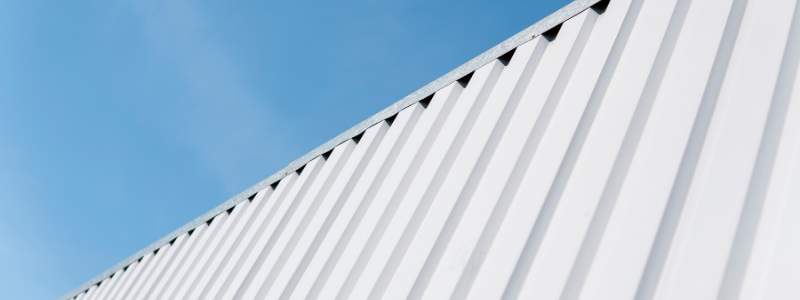
Due to their durability and longevity, metal roofing is a great choice for commercial and residential properties. Learn more about our metal roofing in Colorado below.
What Are The Benefits Of Having A Metal Roof?
Metal roofs offer a plethora of different benefits. Benefits such as:
- Durability.
- Longevity.
- Energy efficiency.
- Environmentally-friendly.
But, along with that, metal roofs are great in Colorado because they protect against intense weather events, such as strong wind and heavy snow. In addition, most metal roofs are completely impact-resistant, will never corrode or decay, and can sustain changing weather and drastic storms.
Seeking a roofing contractor. Here are some guidelines to consider before hiring a Colorado roofing expert for your residential property. Be sure to work with only a reputable source supplying warranties and insurance, like B&M Roofing.
The durability of Metal Roofing Colorado
On average, a metal roof lasts anywhere from forty- to seventy years, which is far more than many other roofs. For example, asphalt roofs tend to only last for twenty years. Because of this longevity, metal roofs tend to pay for themselves. Take a look at the metal roofing vs. shingles comparison article here.
Many commercial properties have used metal roofs due to their energy efficiency. When the sun is shining down on a metal roof, the solar heat is reflected off the roof rather than absorbed. Because of that, the interior of the building that the metal roof is cooler, which can greatly reduce cooling costs.
More and more people are investing in metal roofs due to their environmentally-friendly nature. Most metal roofs are made of recycled material, and when that metal roof can no longer be used, the material from that metal roof is recycled as well.
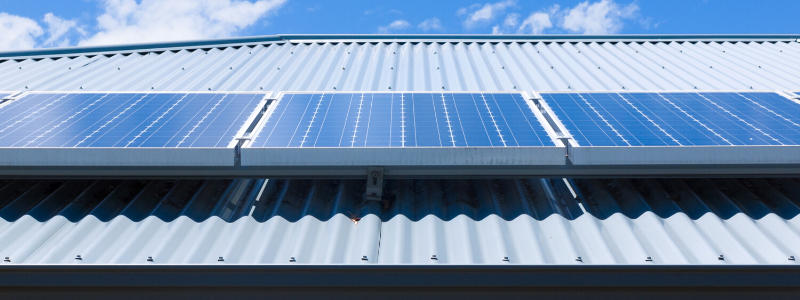
Metal Roofing Materials
Materials such as steel and aluminum are extremely popular for metal roofs. But plenty of metal roofs are made of stainless steel and copper. Each material has its advantages and disadvantages.
Out of all of the different metal roofs that exist, most are made from steel or aluminum. Roofs made from other metals, such as stainless steel and copper, exist but aren’t as prevalent.
Steel
Steel is a very popular roofing material due to the durability, longevity, and affordability that it offers. Steel roofs are built to withstand plenty of wear and tear, yet steel roofs are also very inexpensive. Much of this strength comes from the material itself, as well the different coatings that steel roofs use. Most steel roofs use either a galvanized coating or a galvalume coating. Both coatings enhance the durability of a steel roof.
Aluminum
Aluminum is another very popular roofing material. It is affordable and doesn’t corrode or rust in the same way steel does. But, due to the frequent bouts of intense weather that Colorado experiences, steel roofs are usually the better option since aluminum roofs tend to dent and damage far more easily.
Stainless Steel
Stainless steel roofs and copper metal roofs are less popular than roofs made of steel or aluminum. This lack of popularity comes from the fact that stainless steel and copper are very expensive materials. But, roofs made of stainless steel or copper are exceptionally durable, and this durability ensures the complete protection of the building that the roof is covering.
Are Metal Roofs Expensive?
In comparison to other roofs, metal roofs tend to be rather expensive. But, metal roofs cost as much as they do because of the benefits that they offer. As a result of these benefits, a good metal roof pays for itself.
Metal roofing is more expensive than other types of roofing. But, the higher-prices are for several very good reasons, all of which have to do with the unique benefits that metal roofing offers.
Most metal roofs last for forty-to-seventy-years. Many other roofing materials offer far less longevity, which makes a good metal roof an absolutely fantastic investment.
Metal roofs are exceptionally durable, and they can withstand all kinds of wear-and-tear. Wear-and-tear that includes things like heavy snow and thunder. Since Colorado experiences its fair share of intense weather events, this is exceptionally useful.
Many roofs require frequent maintenance and repairs, but most metal roofs don’t. Because of that, there’s no need to spend large amounts of money on repairs and maintenance, which is another reason as to why metal roofs pay for themselves.
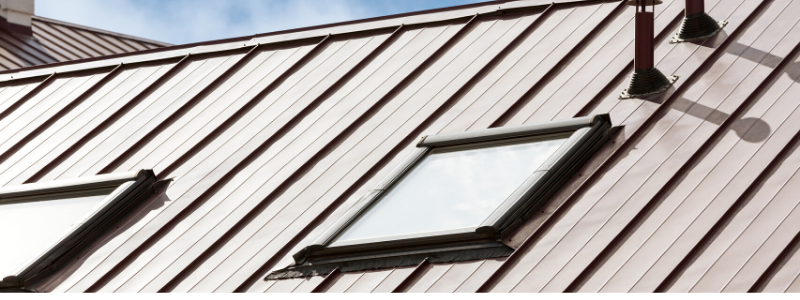
Metal Roofing in Colorado Services
B&M metal roofing Colorado services offer a sound process and approach. Each one of the metal roofing services that we offer has to do with the fabrication and direct application of exterior architectural sheet metals. As such, we can design high-quality metal roofing systems for you, no matter if you need them for a residential or commercial property.
At B&M Roofing, we specialize in the fabrication and direct application of exterior architectural sheet metals. Through our knowledge of exterior architectural sheet metals, we offer a wide variety of different metal roofing services, all of which are related to the installation, repair, and restoration of exterior architectural sheet metals.
Our services consist of the installation, repair, and restoration of:
- Metal roofing systems.
- Metal wall panel systems.
- Gutters.
- Cornices and caps.
- Meal composite material panel systems.
We also offer services related to custom sheet metal fabrication; specialty metalwork for materials such as copper and zinc; and decorative exterior metal cladding and architectural sheet metal roofing.
At B&M Roofing, we will listen to your exact metal roofing needs and craft solutions that fulfill those exact metal roofing needs. By the time your metal roofing project is complete, all of your metal roofing needs will have been fulfilled. Contact us today for your metal roofing Colorado needs at (303) 443-5843.
Tar and Gravel Roof Repair
Our tastes vary with almost everything, and what works for one person might work for the next, especially concerning comfort and style. The roofing system of your home or office should exude comfort and style, and this would only be possible if there were no signs of leakage and dents on it.
Tar and gravel roofs are excellent for several reasons –they shield against ultra violet rays, are affordable, and sit pretty on buildings. They can be the perfect finish your house needs, but you must take the extra step to ensure they always look well-kept. Tar and gravel roofs require maintenance and may eventually need repairs in the long run.
This article will guide you to know when your tar and gravel roof needs repair and what to do at such times.
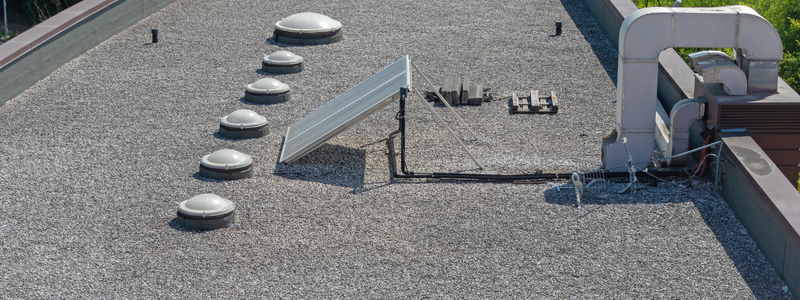
What is a Tar and Gravel Roof?
Tar and gravel roofs are roofing sheets made of the finest materials and offer excellent health benefits to the habitants of that home or office space.
Roofing felt, hot tar, and asphalt-based sheets are laminated layers that makeup tar and gravel roofs. Light-colored gravel lines the topmost layer, shielding it from the sun’s rays and reflecting part of it into the atmosphere.
However, you must always keep an even layer of gravel on the roof, and some tiny rocks should remain loose to protect your roof from puncturing caused by foot traffic.
A tar and gravel roof might be the best option for flat-roofed homes or businesses.
The most cost-effective roof material is tar and gravel, which can last up to 30 years with routine care and repair. It is a terrific alternative for windows and decks that look out over the roof since it offers exceptional UV protection, is energy-efficient and is also an excellent choice for windows.
Since gravel surfaces reflect light rather than absorb it, it helps keep your roof cooler in the summer. Gravel is also an excellent fire retardant.
Due to its low cost and extended lifespan, a tar and gravel roof offers an excellent return on investment. Furthermore, repairs are less frequently needed due to the material’s robustness.
How to Repair a Tar and Gravel Roof
What happens when a tar and gravel roof needs some repair?
This only occurs occasionally, but when it does, there are easy and quick ways to go about it.
Regular maintenance of these types of roofs makes them last even longer.
- Check the gravel at least once a year because the roof’s deterioration is faster if the surface is unprotected.
- Fill up any gaps that might have been left on the roof with gravel.
- Get rid of any accumulated leaf litter. Since the roof is flat, rain doesn’t wash away leaves that gather there, which might lead to ponding. This ponding occurs when water remains on the roof surface for a long, usually 48 hours or more.
- You can fortify your tar and gravel roof by including additional fiberglass or foam layers to improve insulation.
- A more waterproof tar and gravel roof can also be made by adding a fresh acrylic/elastomeric “cool roof” coating.
- Mend the roofing membrane of an older tar and gravel roof. However, for a home, numerous patches could be a sign of prior leaks or weak spots. These places are prone to leak again if the patching was not correctly done in the past.
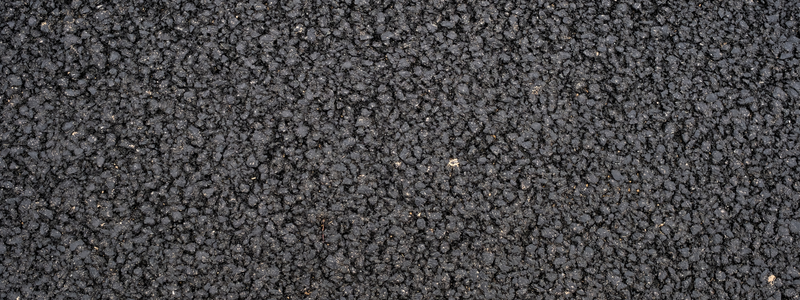
A qualified roofer should always perform every roof repair task. They can securely maintain your roof while also giving you advice on how to extend the lifespan of your roof. If patches are on one-quarter of the rooftop, you need to replace them. In addition to visible indicators like frequent patching, walking on older roofs and feeling how they are under your feet is the best method to gauge how worn out they are. Check out for cracking, open spots, depressions, degraded surfaces, and discoloration.
B&M Roofing offers after-sale and maintenance services for all roof types, and you can book an appointment today anywhere in Denver.
Tar and Gravel Roof Repair vs. Replacement
Sometimes, people mistake a roof repair for a removal and total replacement, which is unfortunate. The latter would cost you more and might not be necessary anyway. This uncertainty is the reason people employ the services of a professional roof inspector. You can save a lot of money and stress when your roof only needs a repair rather than a replacement. It might be tricky to decipher the difference between the two services, but it is possible.
Generally, when you assess the extent of the damage, it is easy to know if it needs a minor repair or a replacement. You need to replace the roof when it has holes and patches in at least 25% of the total surface area. Failure to do so is detrimental to the home residents or staff in the office space.
A roof often needs a replacement when the early sign of minor damage is ignored; it gets worse as the days pass.
You can also do a self-assessment by gently stepping over the roof with your feet to know the dented and bruised areas. This experiment will also tell you how badly damaged the roof is so that you can mend the holes and dents early enough. If you do these assessments regularly, you will be able to detect faulty parts of the roof and fix them instead of a strenuous replacement in a few months.
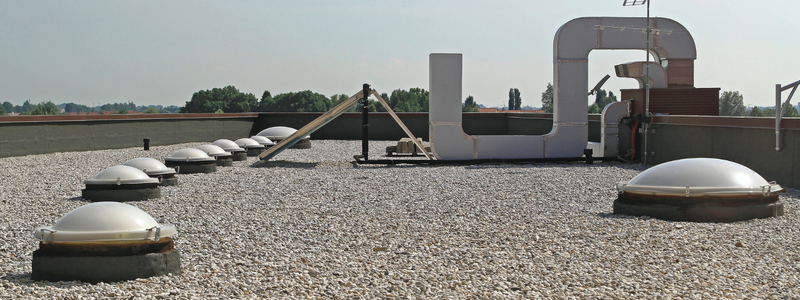
Tar and Gravel Roof Repair by B&M Roofing
Tar and gravel roofs are affordable if you are looking for classy and heat-resistant roofing for your home or office space.
B&M Roofing offers commercial and residential roofing services all around Colorado, and you can benefit from expert advice on what type of roofing maintenance you require. It would be best if you also cultivated the habit of regularly checking your roof in the house and office.
These checks/inspections might not sound like something people should remember to do, but it is of immense importance. It could save you money and physical injury, so it is worth every attention.
Commercial Roofing Company Denver
The day will come when every Colorado business property will need to seek the services of a commercial roofing company in Denver. Maintaining roof integrity is essential to maintaining the health and wellness of your property’s tenants, reducing your carbon footprint by lowering energy costs, and protecting your capital investment.
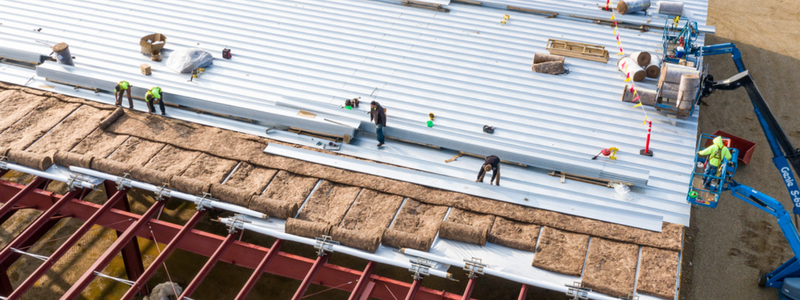
How Long Does a Commercial Property Roof Last in Denver?
Having a relationship with a commercial roofing company in Denver is essential to address any primary signs of roof problems quickly. A few early signs inside are leaks, watermarks, visible signs of wear, or mold.
Here are a few factors that may contribute to the degradation of the integrity of a commercial roof.
Weather
As a commercial roofing company in Denver, B&M Roofing understands the unique challenges we face in Colorado – dry, hot summers and icy-cold, snowy Rocky Mountain winters.
The hot summer sun can damage the sealant materials, which can crack or swell during the season-long heating cycle during the day and cooling at night.
Ice, in particular, can cause significant damage to a roof. It weighs 57.2 pounds per square foot, which is heavy enough to cause minor stress cracks and fissures. As it melts and turns back to a liquid, that water can drip into small gaps and later expand and refreeze, exacerbating the problem.
Roofing Materials
The type of roofing materials also weighs into the lifespan of your roof. As with a residential roof, which most are more familiar with, the material composition is critical to longevity.
For instance, commercial-grade asphalt shingles might last twenty to thirty years, while an architectural sheet metal roof could last between forty to fifty years.
Roof Pitch
The best commercial roofing company in Denver would also understand the significance of roof pitch to a longer-lasting structure. Many commercial property owners opt for a flat roof during the initial build-out to save money.
However, that option could be a mistake – water stands on the top, weakening the structure and contributing to leaks.
As a result, many commercial property owners around Denver now see the value in spending the extra money on a low-sloped roof. This small pitch gives enough movement to rainwater or melting snow or ice to evacuate the structure and minimize the damage.
Hiring the most experienced and best commercial roofing company in Denver, B&M Roofing, will help you learn all your options. Plus, they can help you determine the best options to maximize profits and safety when it’s time to repair, replace, or upgrade your building.
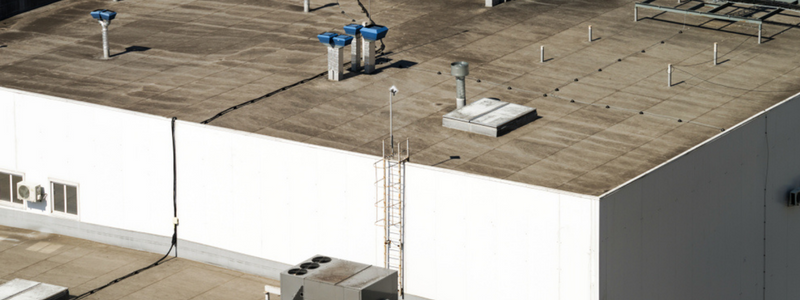
How to Select the Best Commercial Roofing Company in Denver
Because your building is a significant investment, you want to find the best commercial roofing company in Denver. Here are five factors to help you decide.
Review the Company’s Experience
Experience matters. Each job has unique challenges, and only the most experienced crews understand how to deal with problems that arise effectively and competently.
B&M Roofing has completed thousands of jobs at shopping centers, industrial facilities, and other commercial properties since 1947. We bring a breadth of know-how to your job.
Review the Company’s Reputation
At B&M Roofing, we have nothing to hide. We are transparent and gladly share customer testimonials from commercial property managers and residential clients. They rave about our professionalism, commitment to quality, and expertise. In fact, many refer their friends, family, and colleagues to us when they need help with a roof replacement – that is a true display of their confidence!
Please don’t take our word for it. Read our client testimonials for yourself.
Inquire About the Commercial Roofing Company’s Safety Standards
The best commercial roofing company in Denver will commit to job site safety to protect its employees and others around the area.
B&M Roofing creates a culture of employee safety that goes above and beyond industry standards. A few steps we take to protect our staff include these:
- Weekly “tool box talks,” a review of safety pitfalls and current OSHA regulations.
- Six-month safety meetings to keep safety compliance at the top of mind for all staff – both new and our most experienced team members attend these sessions.
- Fall protection training.
- New hire orientation to ensure new staffers are on the same page with the rest of our team before they step foot on a job site.
- Vehicle operations training to certify equipment operators meet or exceed all OSHA and Colorado DOT requirements.
Ask if the Commercial Roofing Company in Denver Holds the Appropriate Licensing
Each residential and commercial roofing company should hold a general contractor’s license and appropriate local business permitting to comply with Colorado law. If a company does not have these things, it is a clear sign of trouble.
These laws help to ensure the industry’s integrity and protect consumers from fraudulent companies who permeate the industry – here today, gone tomorrow. We have all heard these nightmare stories, and our company gladly reassures our clients that we stand against unscrupulous practices. B&M Roofing calls the Denver area home, and we fully comply with state and local laws wherever we operate.
Find Out if the Contractors Carry Insurance
Reputable commercial roofing contractors in Denver will carry general liability, vehicle, and workers’ compensation insurance. Avoid companies that skimp on insurance coverage. If they cut this corner, they are also open to cutting others.
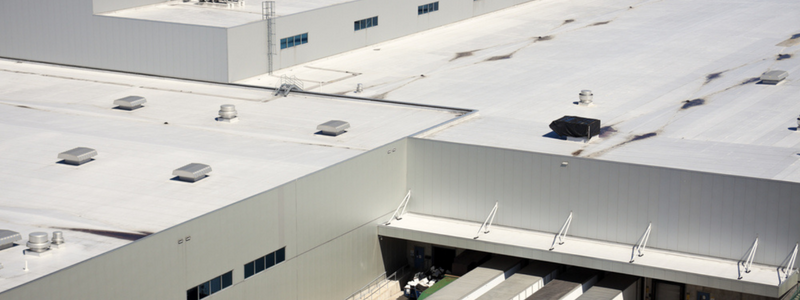
B&M Roofing Meets All the Standards to Qualify as the Best Commercial Roofing Company in Denver
If you’re looking for a commercial roofing company in Denver, B&M Roofing:
- Has over seventy years of service to commercial and residential property owners in Colorado.
- Understands all that must go into a high-quality, long-lasting, and beautiful roof.
- A renowned reputation for commitment to quality work.
- Thousands of testimonials from satisfied customers.
- Meets or exceeds all industry safety standards and OSHA requirements.
- Complies with all state and local licensing laws.
We service commercial (and residential) roofs in the following Colorado communities:
- Denver
- Colorado Springs
- Boulder
- Fort Collins
- Greeley
- Surrounding Front Range area
Please use our convenient online contact form if you do not see your community listed above. One of our professional customer service staff will respond to you promptly to discuss your needs.
